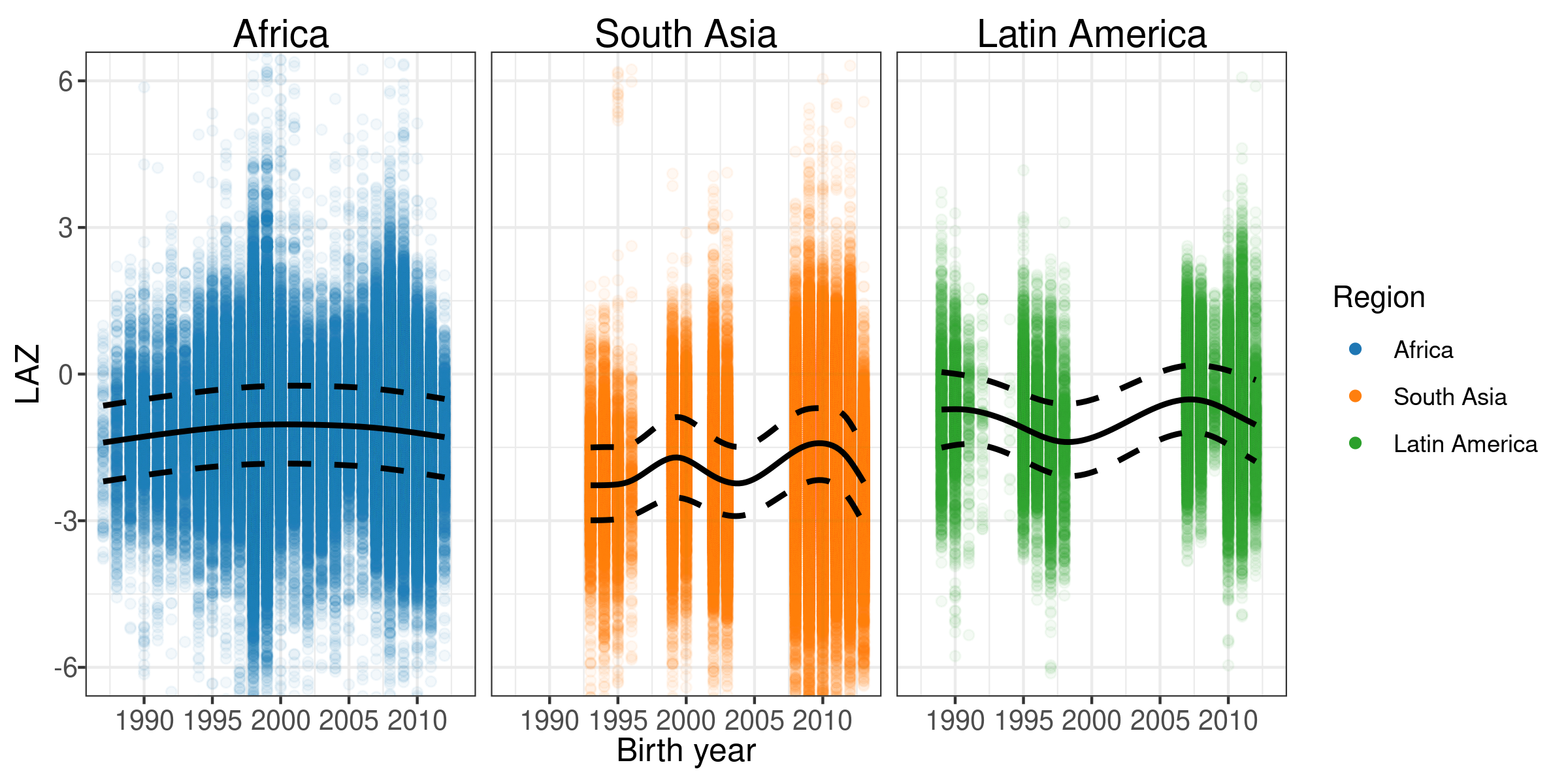Chapter 4 Assessment of potential secular trends
This study included cohorts that measured child growth from 1987 to 2017. To assess potential secular trends, we plotted the mean length-for-age Z-score (LAZ) over time. The plot below shows the individual observations from included studies over this range of years. Curves were fit to the data using generalized additive models, with the solid line fit through the median LAZ by birth year, and the dashed lines mark the 1st and 3rd quartiles. There does not appear to be a secular trend in LAZ.
